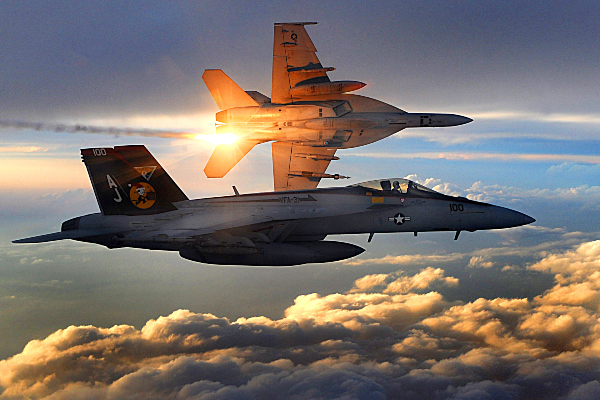Pilots must have fantastic eyesight to do their job safely. Therefore, there are military pilot vision requirements before becoming a pilot.
Pilots often deal with low visibility and blind spots while flying.
Also, eyes take a few seconds to adapt to lower visibility, so eye health needs to be as good as possible for safety reasons.
Eye health includes vision acuity, depth perception, field of vision, and color vision.
However, just because eyesight is not perfect does not mean you cannot become a pilot.
Related Article – Vision Requirements for All Military Branches
Table of Contents
Navy Pilot Vision Requirements
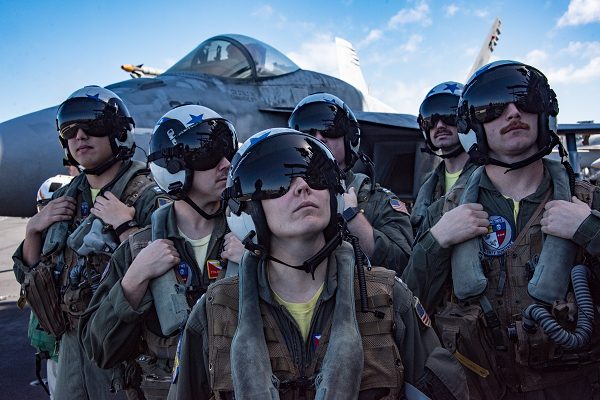
The Navy does eye exams on all recruits, and the eyesight requirements are even more strict for those wishing to become a Navy pilot.
The Navy looks at all areas of the eye.
The eye doctor considers the field of vision, color vision, distant visual acuity, near visual acuity, and depth perception.
Many believe Navy pilots must have 20/20 vision to become a pilot in the Navy.
While the preference is good eyesight, you can still become a Navy pilot if you wear glasses or contact lenses.
However, your vision must be correctable to 20/20 vision.
According to the Navy, all pilot and copilot personnel must have distance vision better than 20/100 uncorrected in each eye. Distance vision must be correctable to 20/20.
As for near vision, vision must be correctable to 20/20. The good news is that bifocals are approved for use.
For new pilot applicants, uncorrected distant vision cannot be less than 20/40 in each eye.
Furthermore, pilots need normal color vision, normal depth perception, and a full field of vision.
Furthermore, to meet military pilot vision requirements, many pilots or those wishing to be a pilot undergo Lasik surgery to correct their vision, which is allowed.
Pilots report that contact lenses cause dry eyes, and having to wear glasses while flying is a nuisance. Lasik is an option that eliminates those problems.
If eyesight deteriorates further, a waiver is required to continue carrier operations.
Also, some pilots end up restricted to flying aircraft with dual controls.
Related Article – Navy Pilot Requirements
Air Force Pilot Vision Requirements
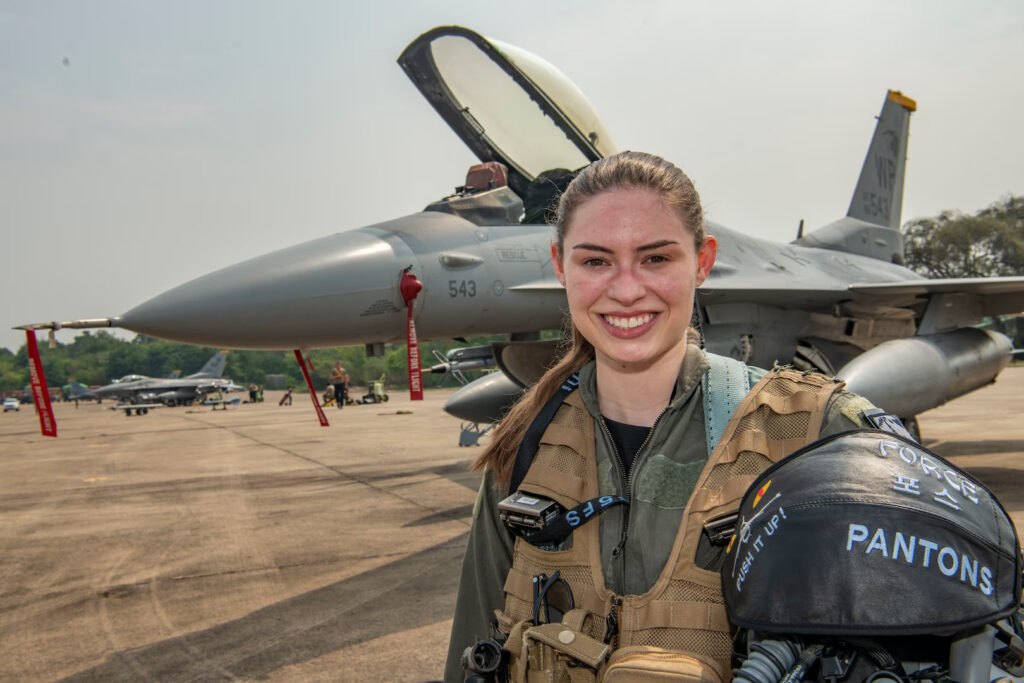
Just like the Navy, the Air Force does vision screening on all new recruits.
Those who wish to be a pilot in the Air Force have stricter vision requirements, however.
All pilots must have normal color vision, and there is no waiver available for those who are color blind or color deficient.
For pilot training eligibility, the candidate’s near vision must be at or better than 20/30 without correction in each eye. Distance visual acuity cannot be worse than 20/70 in each eye, and the vision must be correctable to 20/20.
Fortunately, pilots can now have Lasik treatment to correct vision and still be eligible for their jobs if they do not wish to wear contacts or glasses.
Related Article – Air Force Pilot Requirements
Army Pilot Vision Requirements
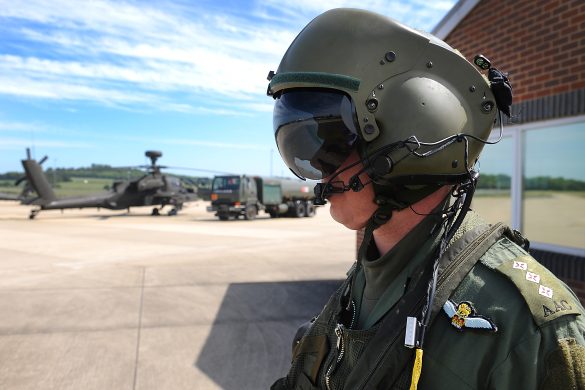
Despite being a primarily land-based branch of the military, the Army does have pilots.
Army pilots must have distant visual acuity equal to or better than 20/50 in either eye that is correctable to 20/20.
Near vision acuity cannot be worse than 20/20 in each eye.
Also, astigmatism greater than +/- 1.00 diopter of the cylinder in either eye will not meet the Army’s minimum standards of military pilot vision requirements.
The Army’s color vision is not as strict as other branches as a potential pilot can pass with a mild color deficiency.
You must score at least a 55 score in red, blue, and green for the computer version of the color test.
Also, depth perception must not exceed 40 seconds of arc.
After training, the Army will not disqualify a pilot for worsening vision as long as the vision is 20/400 or better.
Although, the vision still must be correctable to 20/20.
Army pilots are allowed Lasik surgery to correct their vision.
Also, it is worth mentioning that Army pilots report acceptance into Army aviation school is competitive, and vision is part of the process.
Related Article – Army Helicopter Pilot Requirements
Marine Corps Pilot Vision Requirements
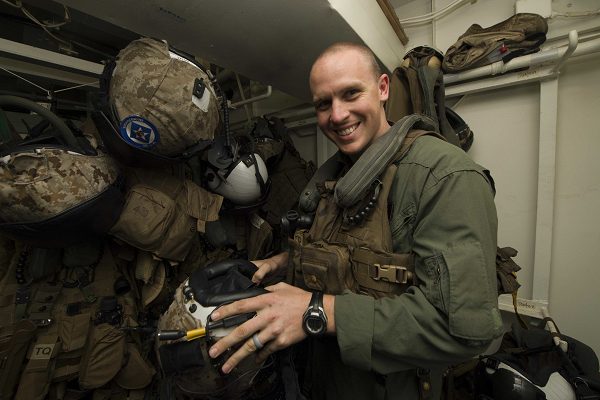
The Marines and the Navy both have the same Class I Flying Physical with which to contend.
The Marines fall under the Department of the Navy for administrative reasons.
Therefore, the Marines and the Navy pilots are trained at Naval Air Stations by Naval Aviators.
While they are both technically Naval Aviators, the Navy and Marine pilots have different specialties after flight school.
Furthermore, they have the same expectations regarding vision.
Marine pilots have military pilot vision requirements such as correctable vision to 20/20.
Also, Marine pilots must have normal color vision.
Moreover, the expectation is that depth perception and the field of vision be normal.
After aviation school, if vision worsens, as long as the vision is at or better than 20/100 in either eye and correctable to 20/20, you will not be disqualified.
You can still wear contacts or glasses as a Marine Aviator.
Although, you may have Lasik surgery if you wish to correct your vision without needing contacts or glasses.
Related Article – Marine Corps Pilot Requirements
Coast Guard Pilot Vision Requirements
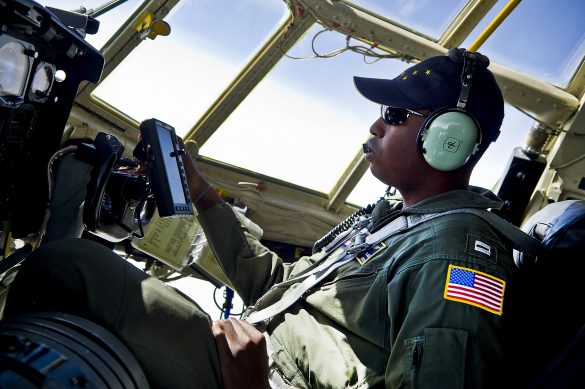
Despite the notion that the Coast Guard is a sea-faring branch, there are pilots in the Coast Guard as well.
Just like the other military branches, there are vision requirements for pilots in this branch.
For visual acuity, pilots must have 20/20 vision.
However, as long as the uncorrected vision is 20/50 or better, glasses or contacts can correct the vision to 20/20.
Color vision in the Coast Guard must be normal with no corrective measures.
Also, depth perception is necessary, and if there are corrective lens used to fix depth perception, it is allowed.
However, these corrective measures must always be in use.
Furthermore, the field of vision in each eye must be normal.
Some Coast Guard pilots wish to have Lasik surgery.
The Coast Guard does allow waivers for Lasik surgery as long as pilots or potential pilots meet all other vision requirements.
Related Article – Coast Guard Pilot Requirements
Conclusion
There are several reasons why there are military pilot vision requirements including coping with low visibility conditions and blind spots.
Each branch of the military has its own requirements, although many of the requirements are very similar.
The Navy and the Marines attend the same aviation school and are held to the same standards for physicals.
Also, the other branches of the military, including the Air Force, Army, and Coast Guard have their own standards and expectations regarding pilots’ vision.
In most cases, waivers are available for those who can correct their vision to 20/20 by using contacts or glasses.
Also, Lasik surgery is acceptable, and many military pilots use laser surgery to correct their vision without the use of contacts or glasses.
References:
See Also
5 Steps To Becoming A Pilot In The Air National Guard
Navy Pilot vs. Air Force Pilot
- Ikon Pass Military Discount: Learn How To Save Big - January 31, 2025
- RTIC Military Discount: Find Out How To Save Big on Gear - January 30, 2025
- Traeger Military Discount: Learn How To Save Big on Smokers - January 28, 2025

